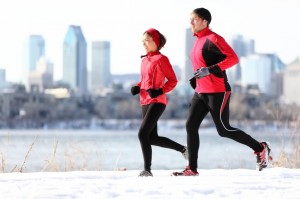This was my comeback race in Latam after living for five years in New York, and mostly competing in races organized by the New York Road Runners.
I was a bit hesitant in signing up for the race, since I only have gotten to Bogota two weeks before the race and hardly had time to train (Bogota is the third-highest capital city in South America at 8,612ft or 2,625 meters above sea level); though at the local gym I joined, I was told that it is one of the better organized races in the city, so I decided to give it a shot.
This was the third anniversary of this 10K race, which has historically had Polar as its main sponsor. This year it also counted with Citibank as a sponsor as part of its 200 years celebration. One of the special features the race offered this year was the possibility to participate with a team of 4 people competing in relays (a couple with run 5k, passing the relay to the next couple to compete the 10K course). I haven’t seen this in other races before, but I thought it was interesting to promote a higher number of participants (people seeking only to run a 5K).
I tried to sign up online, but couldn’t do it because as a mandatory field you needed to input a cell phone, which I did not have yet. Instead, I had to go to one of the Polar stores to do it in situ. The process was fairly easy and quick (no issues because of not having a cell phone here), and had to pay the equivalent of approx. $30. Race pack was handed at the stores starting on Thursday until Saturday. No major issues in collecting it, you just had to hand in your receipt of payment.
The race start time was scheduled for 8:30am with runners suggested to get there at 7:30am. The race started at a relatively centric spot in the northern part of the city (Cra 15 and street 97), which is easily accessible by public transportation.
I got there at 8:00am and there was fairly large crowd (approximate 4,000 runners participated). A group warm up led by a personal trainer started 15 minutes prior to the race. I thought this was interesting, since it was a way to motivate the participants -it was aerobic-music-driven exercise moves-, and also prepared you for the coming effort. Five minutes before the start time I decided to go to the corral (one single corral with no pace separation), though there wasn’t any formal announcement, loud music continued playing. There was no horn or indication that the race started, but I saw people moving forward, however, we were slowed down by a partial barricade in the corrals, which I thought might have been to separate elite athletes from other runners. It was not a big issue, but if you had a larger crowd this could be dangerous.
The day offered good running conditions with approximate temperature of 65°F or 17°C under a sunny sky. Through the race, you had 4 hydration points (2 offering water and 2 a sport drink), which felt enough. Turns were announced in advance with hanging banners and you had volunteers through out the race, which played a key role, especially in the second half of the race, since the route interfered with “Ciclovia” (a program by which each Sunday a main avenue in Bogota is closed for car traffic allowing it to be used by runners and cyclers).
The finish line was in the same spot where the race started; once you crossed the line you got a medal (which is always nice), a bottle of sport drink and fruit.
Approximately, four hours after crossing the finish line, I got an email from the race with my time, which I really liked.
I did not broke my PR, but I felt pretty good about my time, considering the lack of training and the altitude, and also gave me an idea of the local running community.

